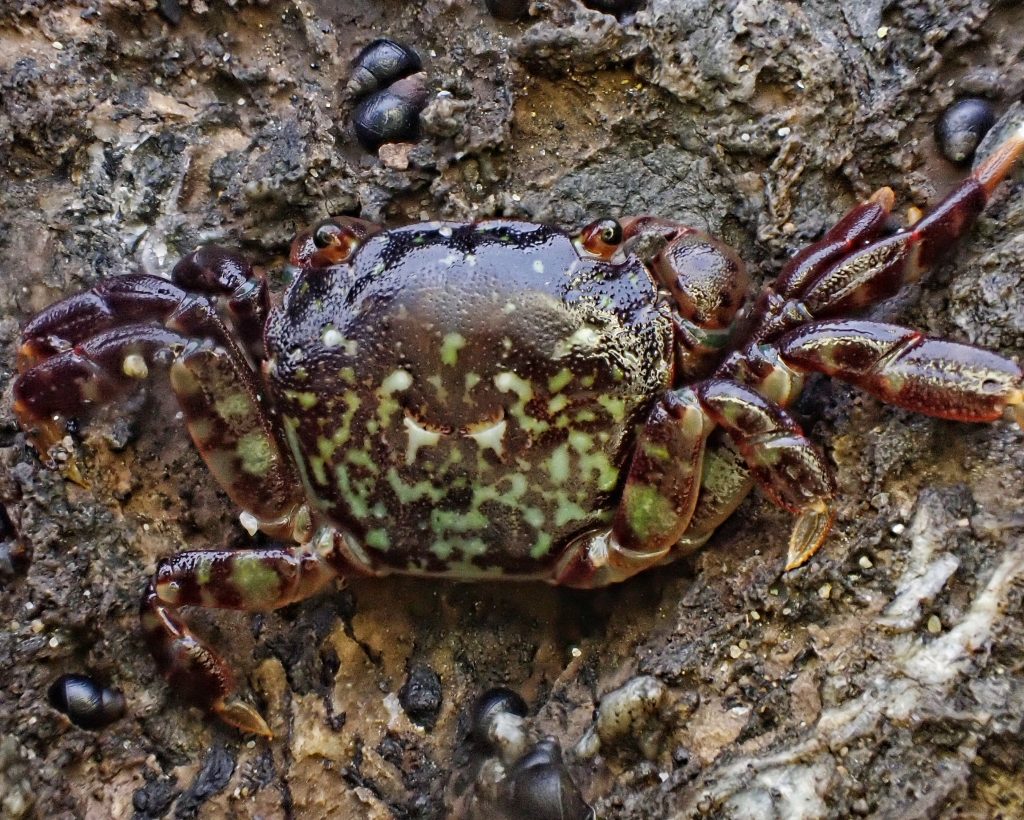
I love purple shore crabs! I never get tired of watching their sideways scuttle among cobblestones of the intertidal zone, and I’m always alert for them in any tidepool I encounter. Their (usually) dark purplish grey coloration with lighter, amorphous blotches is outstanding camouflage against stones and rocky sand, and they can be almost indistinguishable until they move. But then they almost always move when exposed to the light, scuttling into cracks and crevices as fast as their legs will carry them.
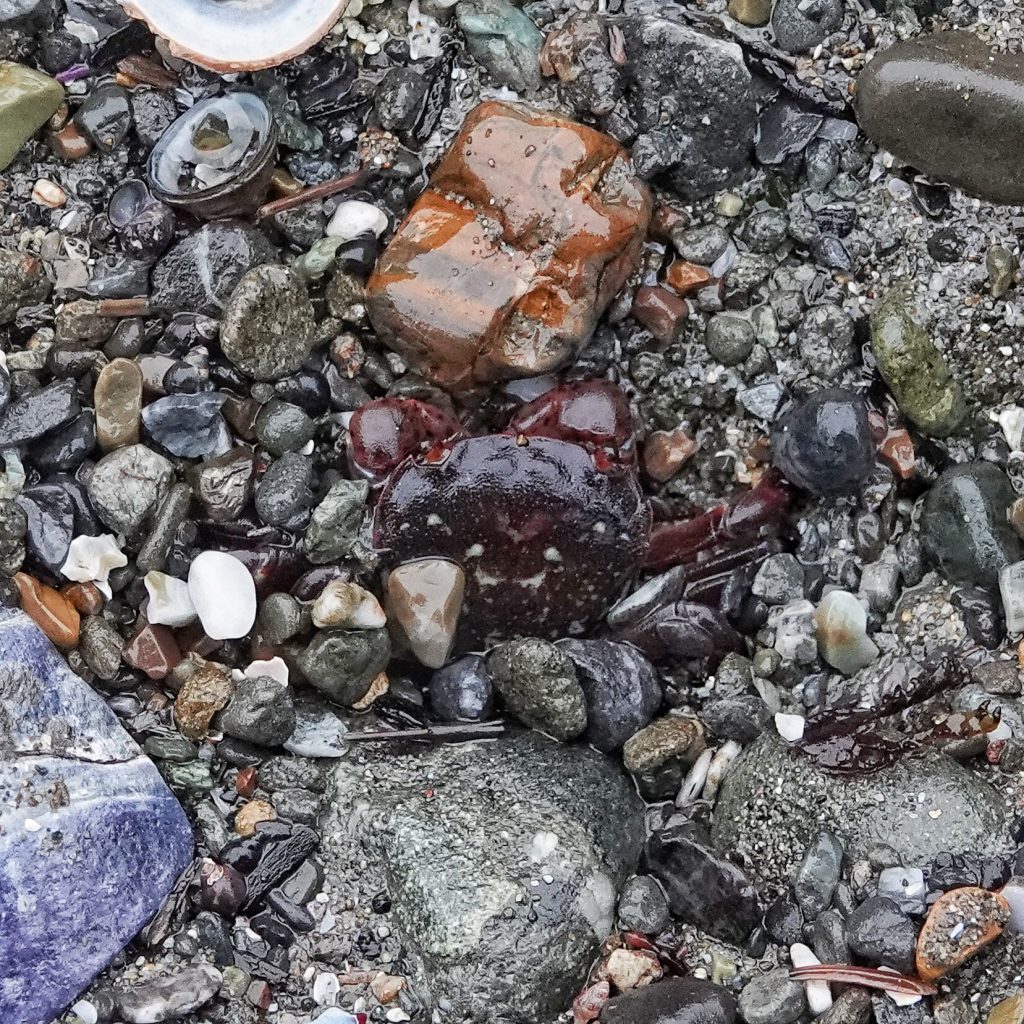
From my experience they are by far the most common shore crab along the Washington and Oregon coast, and at times their numbers can be astounding. On the landward side of Barview Jetty along Tillamook Bay, where seawater leaks through the jetty to create a relatively stable marine habitat, almost every rock one looks under harbors at least one, and often more, of these glorious little crustaceans. They were slightly less common the day I took all of these photos at Lone Ranch Beach, in Curry County, Oregon.
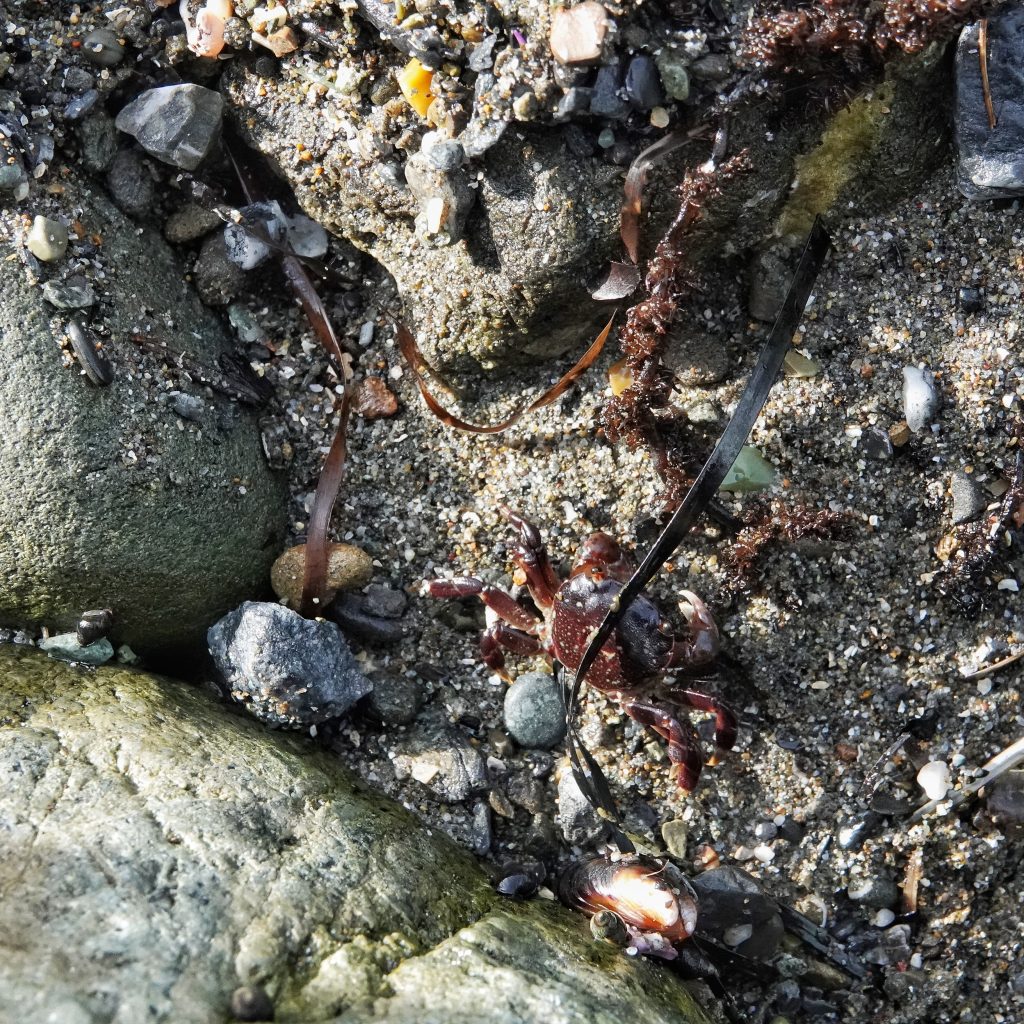
Hemigrapsus nudus are, at present, most commonly placed in the family Varunidae, but some taxonomists still classify them in Grapsidae, and the whole paraphyletic superfamily Grapsoidea is still in the process of extensive revision.
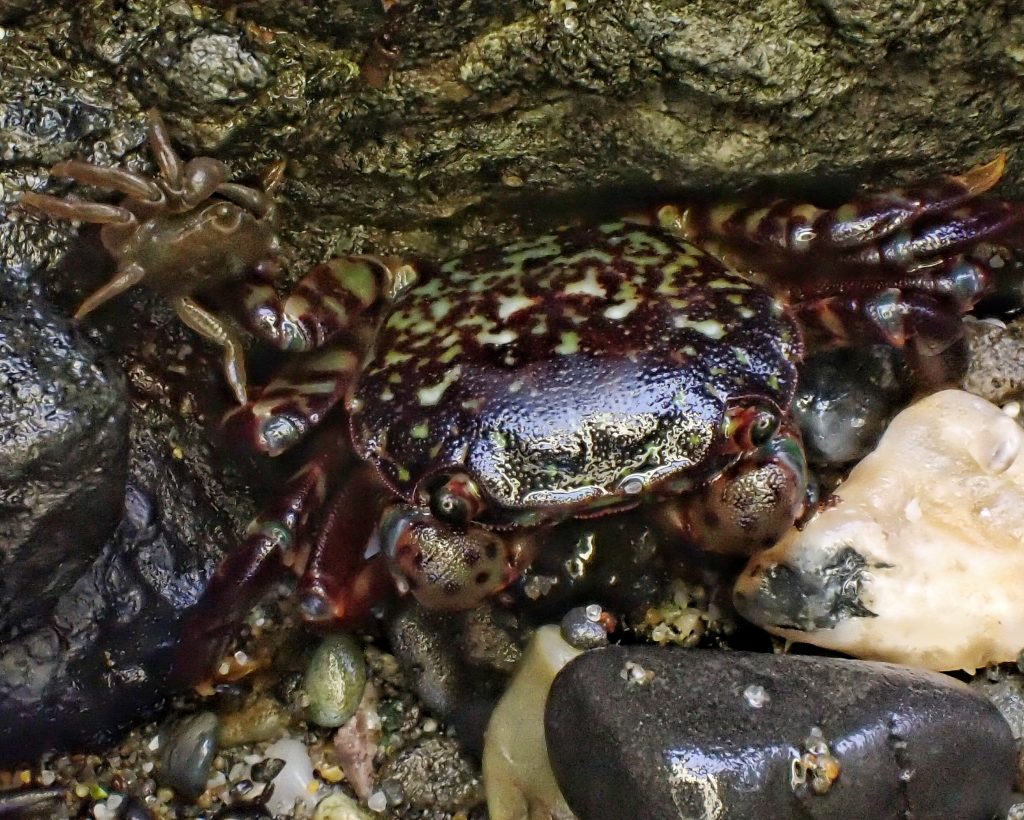
Description– Small (1.5-2.2” across their carapace) roundedly rectangular shore crab that is usually purple (though they may be red or olive green) with widely varying (though usually more or less symmetrical) amounts of light colored blotching; legs are hairless, and are the same color as the carapace, but the claws are always lighter colored, with purple or red spots; there are three teeth on each side of the carapace near the front; as in all shore crabs, males have a narrow, triangular abdomen with much of the sternum exposed, while females have a wide, lined abdomen that covers the sternum, as shown here.
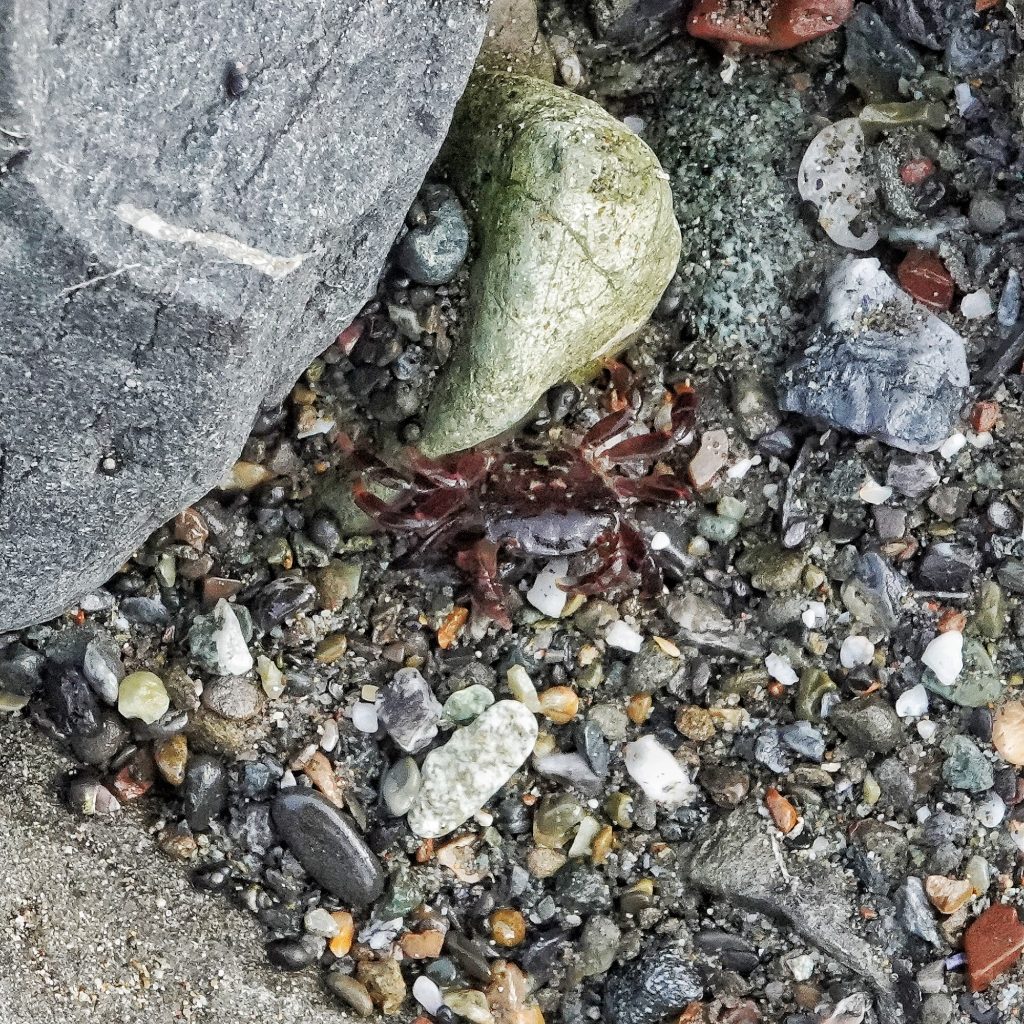
Similar species– Hemigrapsus oregonensis is usually lighter green to brown, orange, or yellow, with blotches darker rather than lighter than the ground color, and their legs have abundant hairs (setae); Pachygrapsus crassipes has abundant transverse lines on its carapace, has two rather than three teeth one the front sides of the carapace, and lacks spots on its claws.
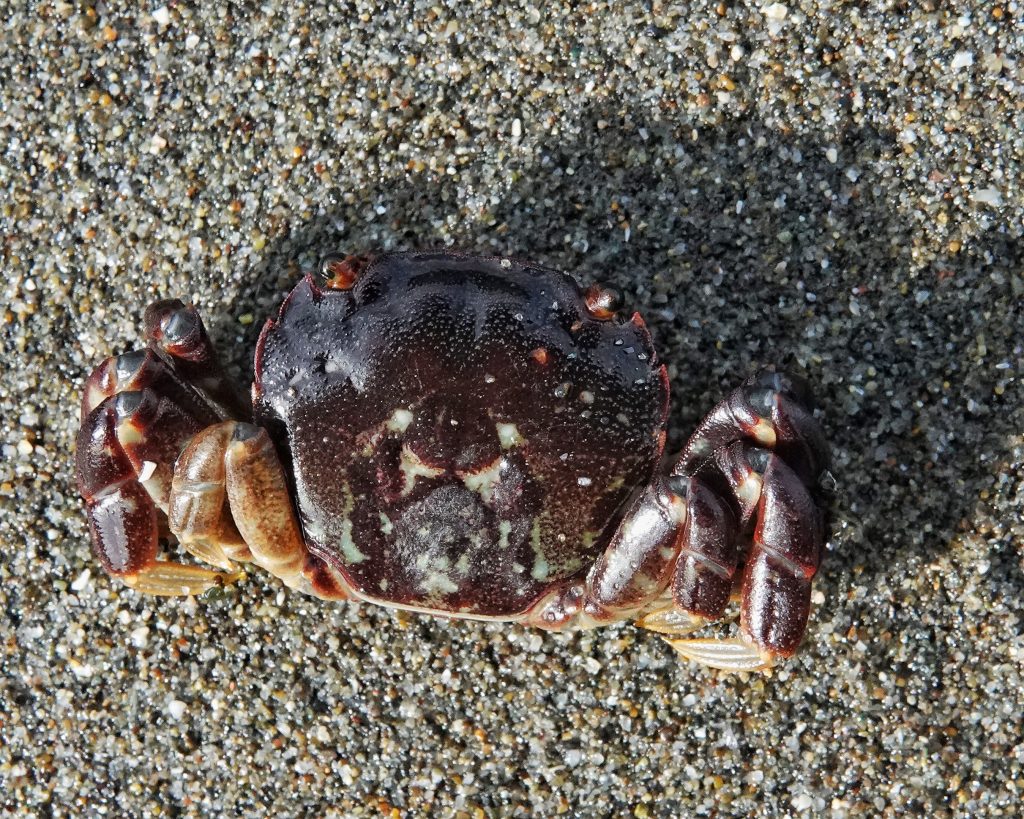
Habitat-Intertidal areas of coastal bays, marshes, and rocky areas of the open coast; only occasionally found on exposed, sandy beaches; primarily nocturnal feeders who prefer to spend daylight under rocks on coarse sand.
Range-Southeast Alaska to the Gulf of California; region wide in appropriate habitat.
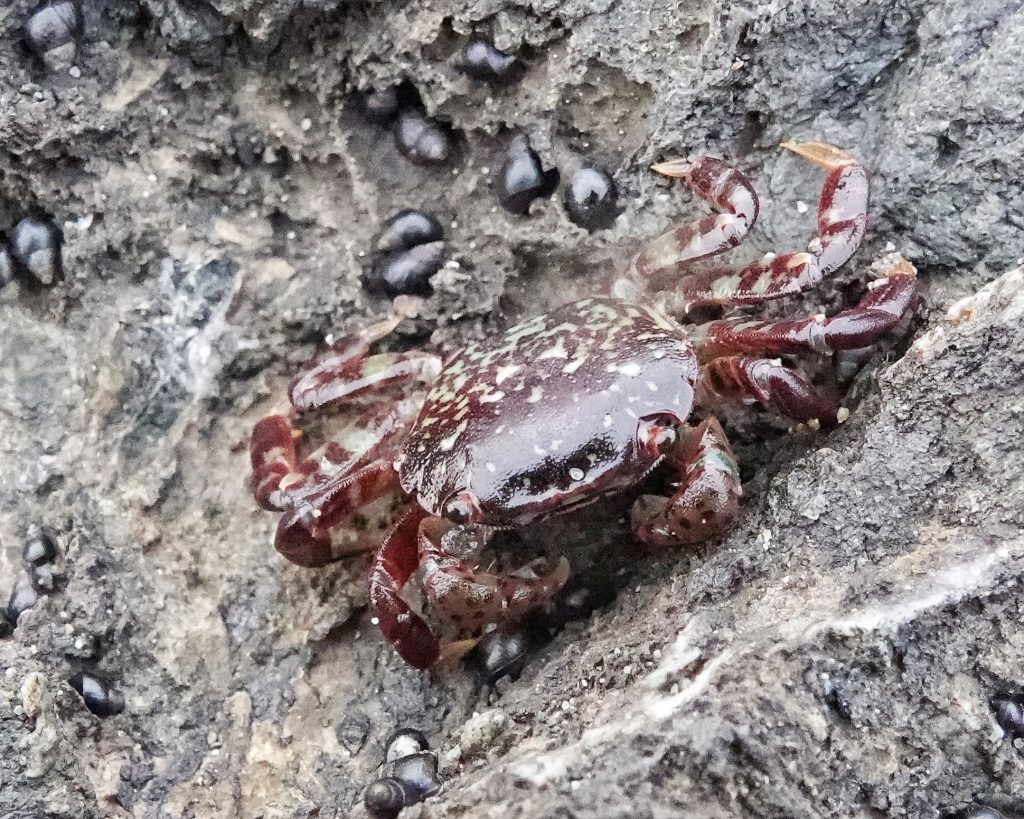
Eats-Diatoms, microscopic single called green algae called desmids, the green algae called sea lettuce (genus Ulva), amphipods, the eggs of Nucella emarginata and other whelks, occasional carrion and other detritus.
Eaten by-Sculpins and other fish, gulls, white-winged scoters, blue herons and other birds, raccoons and other shore dwelling terrestrial mammals, giant green anemone; Pachygrapsus shore crabs attack recently molted individuals.
Adults active-Year around
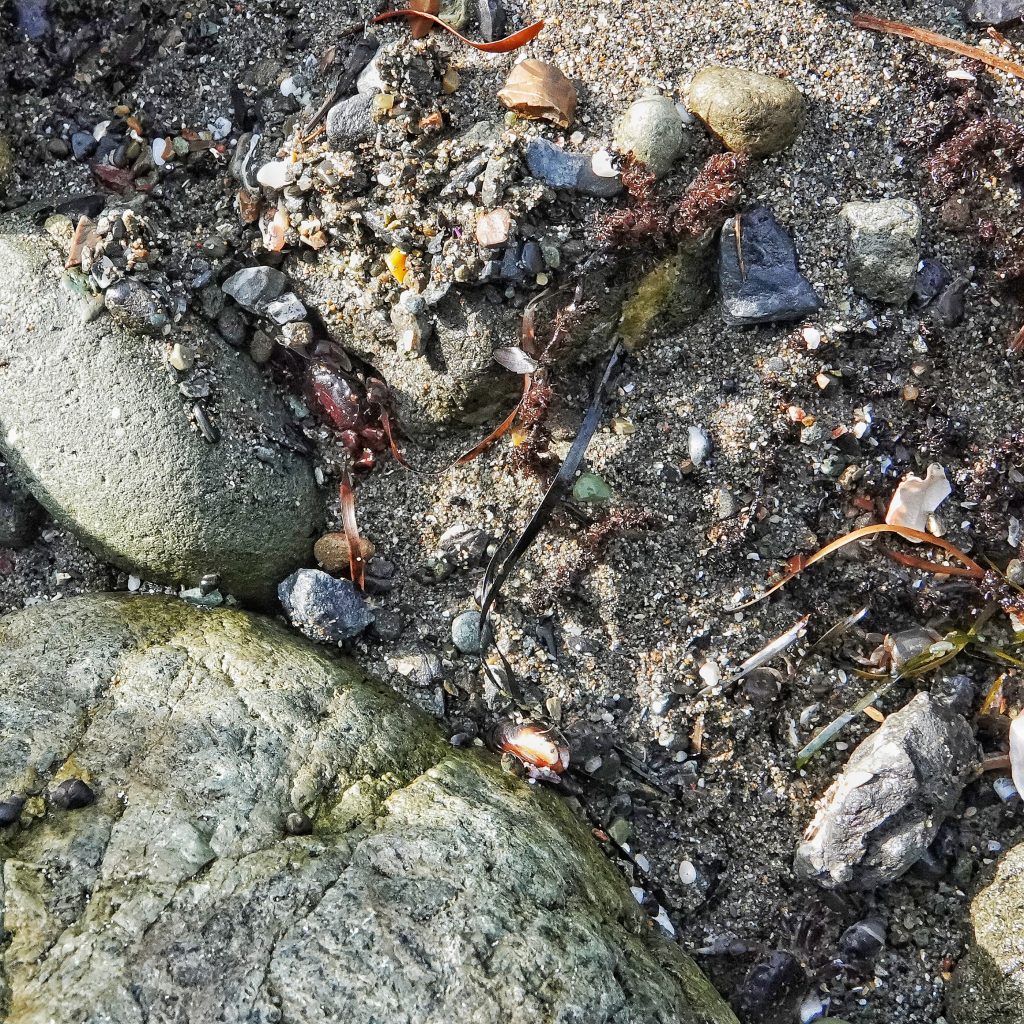
Life cycle-Breeds from December into April; females carry 400-36,000 fertilized eggs under their tail, and the larvae hatch from there; eggs hatch from May into July; larvae go through 5 stages as planktonic, filter feeding, free swimming zoea which are only a millimeter in size at birth, have a tough, transparent skin, jointed legs, a segmented tail which they use for propulsion, and spikes on their upper body; during the next stage they metamorphose into what is called a megalopa, which is about 1.8mm long, has legs, claws, and a rectangular carapace, but still swims with its tail; after 1-3 days the megalopa settle to the bottom and moult into a juvenile which looks just like an adult, and they abandon filter feeding for an adult diet.
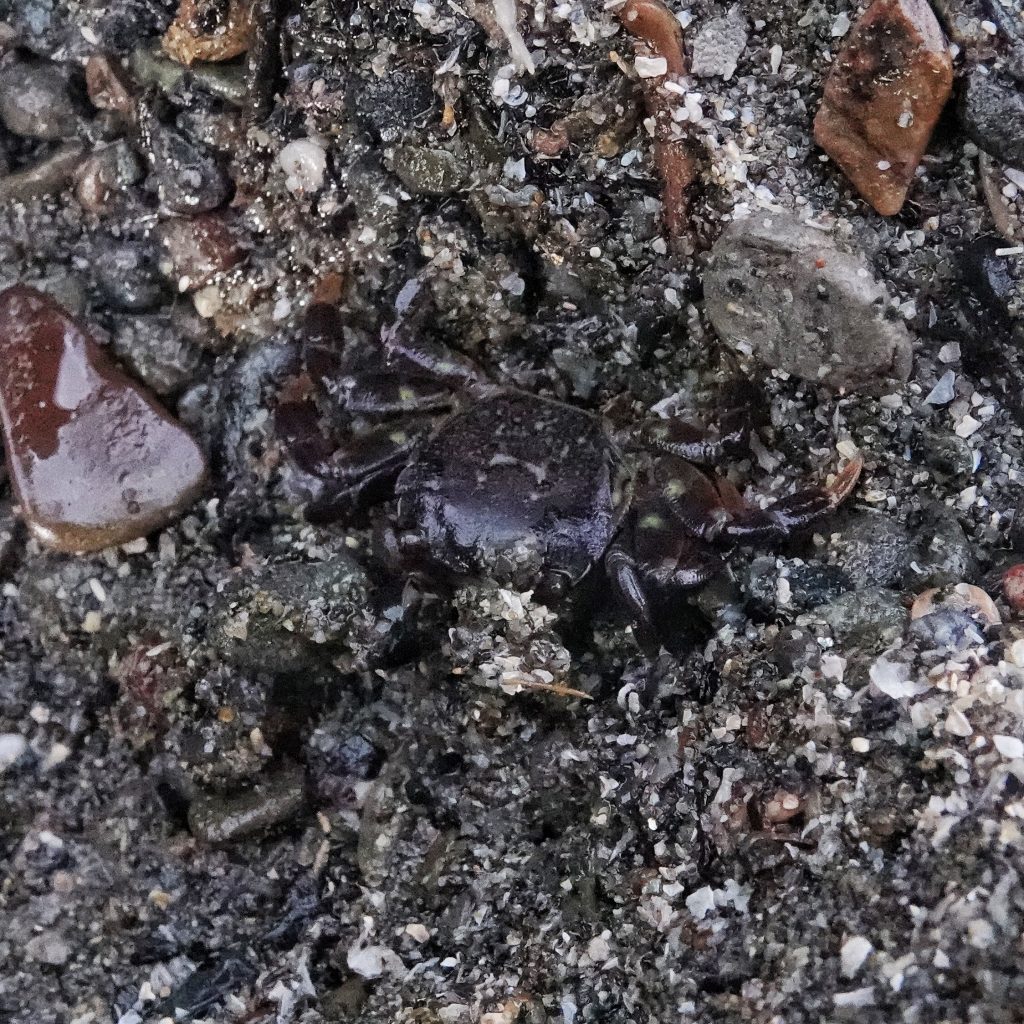
Etymology of names– Hemigrapsus is from the Greek words for ‘half crab’, but I cannot ascertain what ‘half’ alludes to. The specific epithet nudus is from the Latin word for ‘naked’, and presumably refers to the lack of setae on their legs.
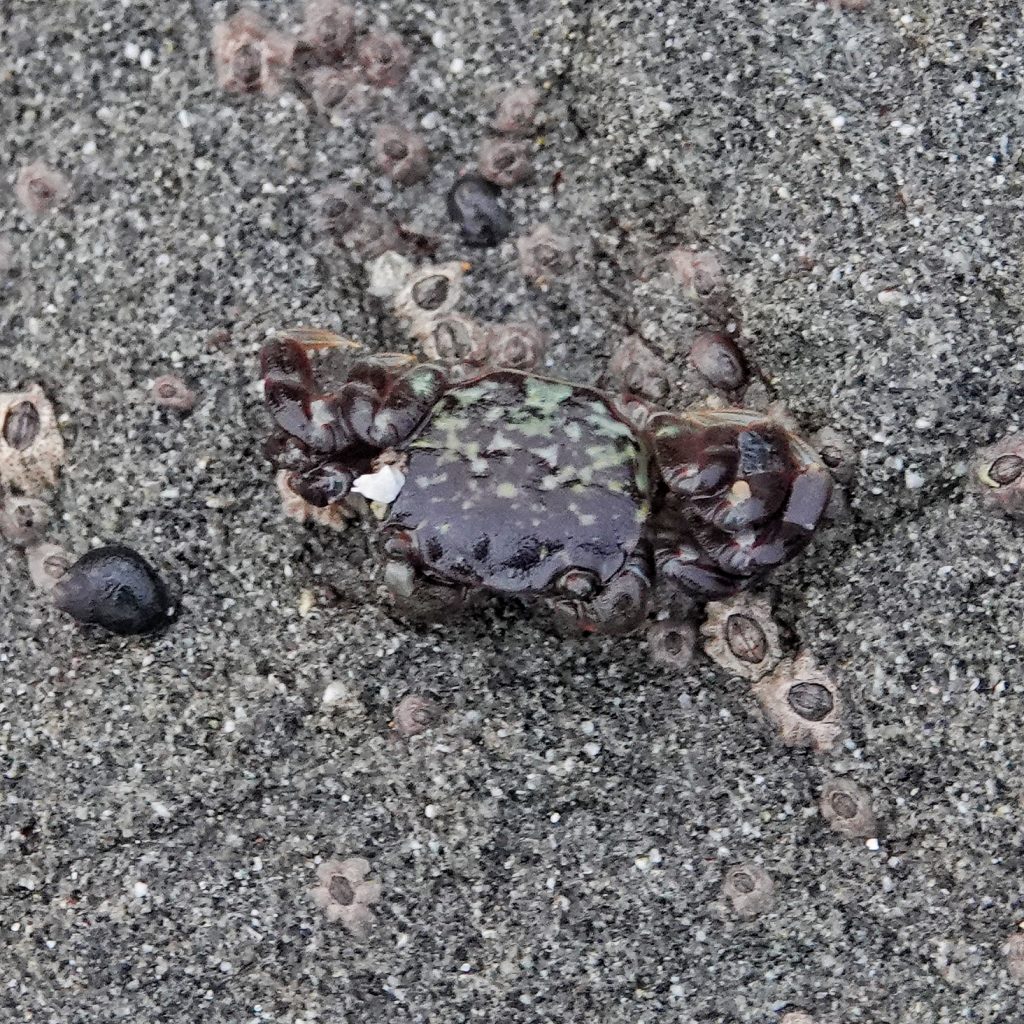
https://oimb.uoregon.edu/wp-content/uploads/2019/03/H_nudus_2018.pdf
Purple shore crab • Hemigrapsus nudus – Biodiversity of the Central Coast
https://www.otago.ac.nz/marine-studies/resources/download/otago062821.pdf
Protocol in Focus: Male or Female? – Washington Sea Grant
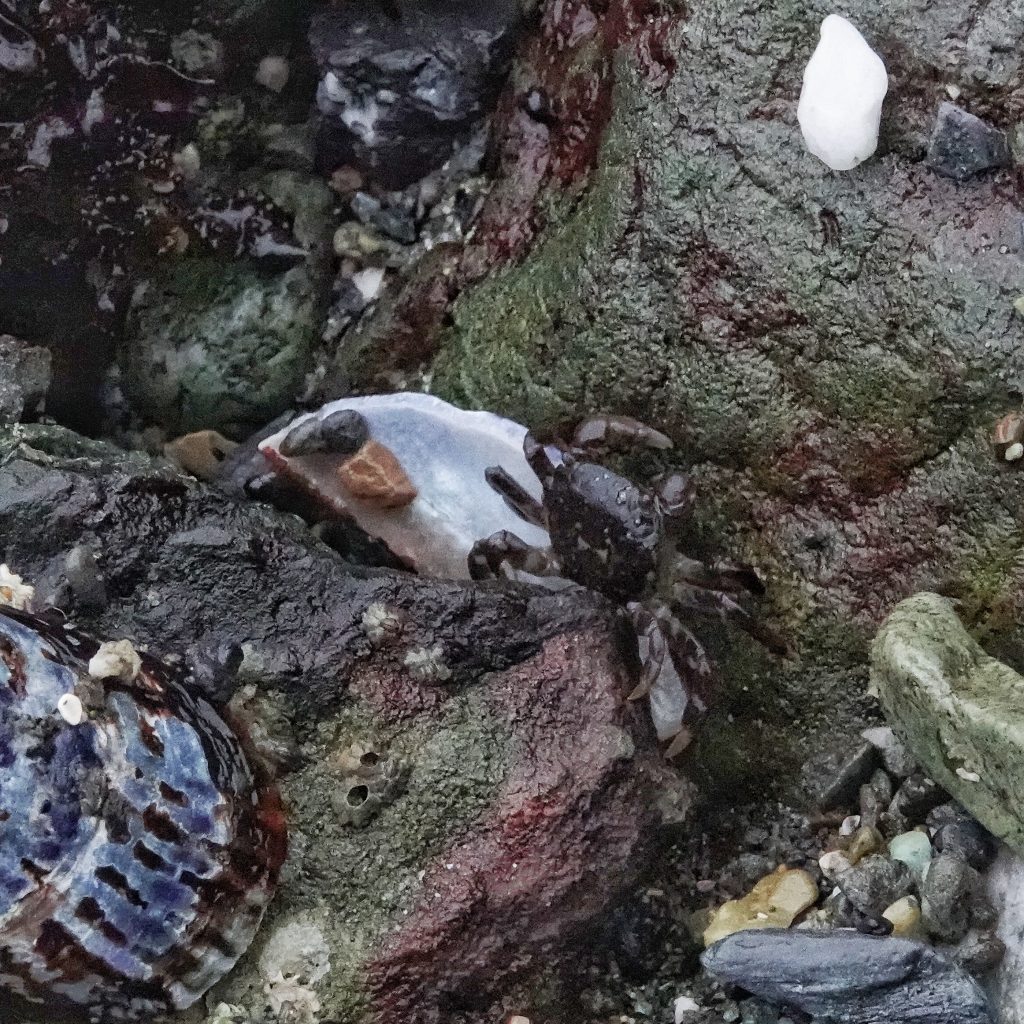
You mentioned that the project may take you through the next decade. I’d like to think that would include several editions, in which case the first one may be due soon. Your readers are eager for another chance to pay it forward. Thank you and take care.
Thanks for your kind words, Brooke! It was never my intention to turn this project into a book. But if I ever run into an IT person who wants to turn it into a downloadable app so people could store the info on their phone I would happily let them do it. And if I was approached by a publisher I’d let them publish it. But it’s never been about trying to make money from this project, and I feel like it’s quite accessible now.
It’s a fine thing, Dan, and if you happen to make a buck with it no one would begrudge you that. Cheers.